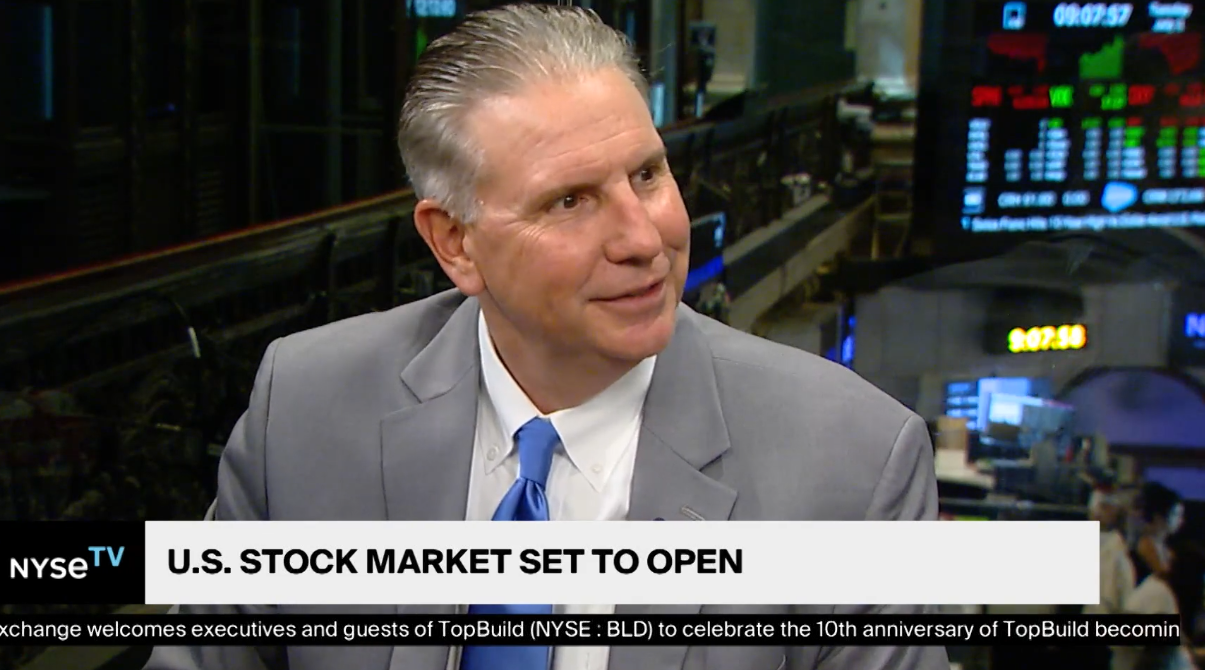
Stocks Trend Higher for All the Right Reasons
Market Overview
Sources: Sources for data in tables: Equity Market and Fixed Income returns are from JP Morgan as of 02/23/18. Rates and Economic Calendar Data from Bloomberg as of 02/26/18. International developed markets measured by the MSCI EAFE Index, emerging markets measured by the MSCI EM Index. Sector performance is measured using GICS methodology.
Happening Now
U.S. Stocks posted their second straight week of gains following early February’s headline grabbing sell-off. Now that the dust has settled, it appears investors are increasingly focusing on the tremendous earnings growth corporations generated in the fourth quarter as well as the optimistic forward guidance provided by management. Last week, the S&P 500 Index gained 0.6%, the Russell Midcap index advanced 0.3%, and the Russell 2000 Index, a measure of the Nation’s smallest public companies, moved 0.4% higher. Internationally, developed markets gave back 0.4% while emerging markets posted a 1.4% gain. On the fixed income side, the yield on the 10 Year U.S. Treasury note ticked one basis point higher to 2.88%.
At this point in the fourth quarter earnings season, 90% of companies in the S&P 500 have reported with an average growth rate of 14.8%. This level of growth is higher than 74% of the estimates analysts calculated and if it holds will represent the highest level of growth since 2011. The solid results come before any impact of tax reform is felt and will likely be built upon throughout 2018. In addition to higher earnings, inflation and interest rates have stabilized, at least temporarily stifling some concerns of a dramatic tightening of financial conditions. For the time being, this should further support stock prices and allow investors to focus on the current tailwinds that are in place for equities rather than the potential headwinds that may lie ahead.
Economic activity remains firm in the U.S. with the Purchasing Managers Index (PMI) coming in at a consensus beating 55.9 last week, the highest reading in over two years. In addition to manufacturers, it appears that U.S. consumers also remain healthy with the Conference Board’s Consumer Confidence measure reaching a 17 year high in February.
With the good times rolling again, investor focus has turned back to the Fed with new Chair Jerome Powell’s first appearance before the House Financial Services Committee on Tuesday, February 27. In his inaugural testimony, Powell suggested that “inflation is moving up to target” and his “personal outlook for the economy has strengthened since December.”
A stronger economy should give credence to tighter monetary policy and, eventually, a less favorable environment for both stocks and bonds. Upon hearing Powell’s testimony, U.S. markets declined marginally and interest rates ticked higher. While we are optimistic that the economy and stock markets will grow over the proceeding twelve months, we recognize that the market may be sensitive to strong economic data that, in turn, suggests higher interest rates. Investors should continue to separate short term volatility from the longer term trend and understand how their portfolio is positioned to perform consistent with their own investment goals and tolerance for risk.
Important Information and Disclaimers
Disclosures: Hennion & Walsh is the sponsor of SmartTrust® Unit Investment Trusts (UITs). For more information on SmartTrust® UITs, please visit www.smarttrustuit.com. The overview above is for informational purposes and is not an offer to sell or a solicitation of an offer to buy any SmartTrust® UITs. Investors should consider the Trust’s investment objective, risks, charges and expenses carefully before investing. The prospectus contains this and other information relevant to an investment in the Trust and investors should read the prospectus carefully before they invest.
Investing in foreign securities presents certain risks not associated with domestic investments, such as currency fluctuation, political and economic instability, and different accounting standards. This may result in greater share price volatility. These risks are heightened in emerging markets.
There are special risks associated with an investment in real estate, including credit risk, interest rate fluctuations and the impact of varied economic conditions. Distributions from REIT investments are taxed at the owner’s tax bracket.
The prices of small company and mid cap stocks are generally more volatile than large company stocks. They often involve higher risks because smaller companies may lack the management expertise, financial resources, product diversification and competitive strengths to endure adverse economic conditions.
Investing in commodities is not suitable for all investors. Exposure to the commodities markets may subject an investment to greater share price volatility than an investment in traditional equity or debt securities. Investments in commodities may be affected by changes in overall market movements, commodity index volatility, changes in interest rates or factors affecting a particular industry or commodity.
Products that invest in commodities may employ more complex strategies which may expose investors to additional risks.
Investing in fixed income securities involves certain risks such as market risk if sold prior to maturity and credit risk especially if investing in high yield bonds, which have lower ratings and are subject to greater volatility. All fixed income investments may be worth less than original cost upon redemption or maturity. Bond Prices fluctuate inversely to changes in interest rates. Therefore, a general rise in interest rates can result in the decline of the value of your investment.
Definitions
MSCI- EAFE: The Morgan Stanley Capital International Europe, Australasia and Far East Index, a free float-adjusted market capitalization index that is designed to measure developed-market equity performance, excluding the United States and Canada.
MSCI-Emerging Markets: The Morgan Stanley Capital International Emerging Market Index, is a free float-adjusted market capitalization index that is designed to measure the performance of global emerging markets of about 25 emerging economies.
Russell 3000: The Russell 3000 measures the performance of the 3000 largest US companies based on total market capitalization and represents about 98% of the investible US Equity market.
ML BOFA US Corp Mstr [Merill Lynch US Corporate Master]: The Merrill Lynch Corporate Master Market Index is a statistical composite tracking the performance of the entire US corporate bond market over time.
ML Muni Master [Merill Lynch US Corporate Master]: The Merrill Lynch Municipal Bond Master Index is a broad measure of the municipal fixed income market.
Investors cannot directly purchase any index.
LIBOR, London Interbank Offered Rate, is the rate of interest at which banks offer to lend money to one another in the wholesale money markets in London.
The Dow Jones Industrial Average is an unweighted index of 30 “blue-chip” industrial U.S. stocks.
The S&P Midcap 400 Index is a capitalization-weighted index measuring the performance of the mid-range sector of the U.S. stock market, and represents approximately 7% of the total market value of U.S. equities. Companies in the Index fall between S&P 500 Index and the S&P SmallCap 600 Index in size: between $1-4 billion.
DJ Equity REIT Index represents all publicly traded real estate investment trusts in the Dow Jones U.S. stock universe classified as Equity REITs according to the S&P Dow Jones Indices REIT Industry Classification Hierarchy. These companies are REITs that primarily own and operate income-producing real estate.




